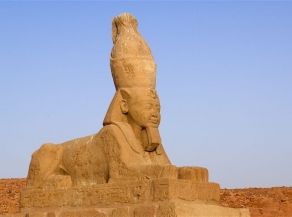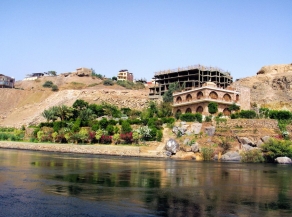

Oct 23, 2019
The Nile Museum
- By : Sama El- Sayed
- In : Winter , 2017
The Nile Museum: On Sunday Jan 10th,2016 the Premier Minister Sherif Ismail inaugurated The Nile Museum in the southern province of Aswan in a large ceremony attended by Minister of Water Resources and Irrigation Mr. Hossam Moghazy ,the Culture Minister Helmy Al-Namnam ,a group of senior officials ,Arab, African and European ambassadors, public figures moreover media people, writers and journalists.
The inauguration of The Nile Museum is clear evidence which clarify that Egypt is a very keen country to improve its relations with Nile Basin member States . The exhibits shows the history of the Nile and the project tells the history of the Nile River and  projects built on it. The opening of The Nile Museum coincides with Aswan National Day and the anniversary of building the High Dam.
projects built on it. The opening of The Nile Museum coincides with Aswan National Day and the anniversary of building the High Dam.
The Nile Museum contains 3 linked floors. The Irrigation Ministry will include a display hall, a library and a conference room moreover the museum features the development of irrigation activities and tools used since the era of Muhammad Ali Also, it displays the civilizations and traditions of the Nile Basin member states.
The Nile Basin countries are 11 countries. Each country shared with an Archeological masterpiece in The Nile Museum . These countries are: Egypt, Burundi, Rwanda, Tanzania, Kenya, Zaire, Uganda, Ethiopia, Eritrea, Sudan and South Sudan.
The River Nile is the reason of life for the Nile Basin members. The River Nile has played a huge role in the history of ancient Egypt. The river got its name from the Greek word Neilos, which means valley. The Ancient Egyptians called the r iver Ar or Aur (black) because of the color of the sediment left after the river's annual flood. The Nile River is not only the longest river in Africa, but it’s the longest river in the world
iver Ar or Aur (black) because of the color of the sediment left after the river's annual flood. The Nile River is not only the longest river in Africa, but it’s the longest river in the world
The River Nile is about 6,670 km (4,160 miles) in length. It originates in Burundi, south of the equator, and flows northward through northeastern Africa, eventually flowing through Egypt and finally draining into the Mediterranean Sea. Lake Victoria, is generally thought of as the source of the River Nile. On the northern edge of the lake, water pours over a waterfall, known as Ripon Falls, into a narrow opening which some people believe is the beginning of the River Nile.
The River Nile flooded every year between June and September, in a season the Egyptians called Akhet - the inundation. Melting snow and heavy summer rain in the Ethiopian Mountains sent a stream of water causing the banks of the River Nile in Egypt to overflow on the flat desert land.
Around 40 million people, which are half of Egypt’s population, live in the Nile Delta region. Most Egyptians live near the Nile as it provided water, food, transportation and excellent soil for growing food. The ancient Egyptians could grow crops only in the mud left behind when the Nile flooded. So they all had fields all along the River Nile.
So we deduce that the ancient Egyptians and those of current time can't live without the River Nile as Herodotus said "Egypt is the gift of the Nile"


